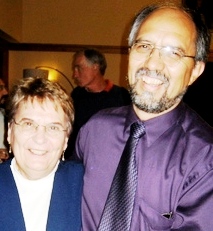The following is a guest post by Mano a Mano intern Jesse Flanagan:
When I finished high school, my graduating class voted me “most likely to join the Peace Corps”.
I didn’t know what the Peace Corps was or what it did, but five years later I was living on a mountain top in El Salvador teaching teenagers to weave hammocks. Looking back, I suppose my high school peers knew that I wanted to make a difference and that the Peace Corps was the right place for me to do that.
As a youth development volunteer, I had the opportunity to engage my host community and work with my neighbors on issues that we identified together as important. With the support of teachers in my community, we led vocational training workshops and developed better ways to manage our community’s water resources. We worked together, we completed projects together, and we celebrated success together, in large part because we shared a vision for improving life in our community.
I volunteer my time at Mano a Mano for the same reasons that I chose to work as a Peace Corps Volunteer
Mano a Mano exists to support the development that is already going on in rural communities. Rural communities approach Mano a Mano with their proposals and their needs, and Mano a Mano does its best to support them. The Peace Corps functions in a similar fashion. Rural communities approach the Peace Corps with ideas for their own development and if the Peace Corps can offer human resources to support that development, they often send a volunteer. The important overlap, and the thing that keeps me coming back to Mano a Mano, is the belief that development comes from within a community, not from the outside. Mano a Mano and the Peace Corps support and provide resources, technical support, and coordination, but the impetus for the project comes from the people. That’s what makes these organizations successful in my book.
 Community residents volunteering on the site of the Chivirancho clinic which was completed in 2013 with our counterpart organization Mano a Mano Bolivia.
Community residents volunteering on the site of the Chivirancho clinic which was completed in 2013 with our counterpart organization Mano a Mano Bolivia.Many Peace Corps Volunteers that I served with went to great lengths to accomplish the tasks that they set out for themselves. One volunteer that I served with carried sacks of sand on his back for nearly two weeks to help his community build a small fishery. I learned to play the recorder so that I could teach a basic music class to elementary students, something my community identified as a priority. By the time I left my community, my students were performing the Imperial March from Star Wars and most of Yoda’s theme song. Working in the United States with Mano a Mano is no different. Staff and volunteers at Mano a Mano do whatever it takes to finish the job at hand. No staff member is too busy to help unload a trailer in -10 degree weather. When there is work to be done, every volunteer has sorted supplies, loaded boxes, or stuffed envelopes. Minnesota is not El Salvador, but the ethos of the volunteers is one in the same.
 Joan Velasquez, Mano a Mano co-founder and RPCV Bolivia, won the Sargent Shriver Award in 2008.
Joan Velasquez, Mano a Mano co-founder and RPCV Bolivia, won the Sargent Shriver Award in 2008.Mano a Mano is the right place for a Returned Peace Corps Volunteer like me, and for everyone who appreciates the way that Mano a Mano goes about its business. Mano a Mano focuses its efforts on the priorities of the rural Bolivians that it serves, and staff and volunteers don’t mind getting their hands dirty to get their work done. As long as Mano a Mano can maintain those qualities, I have no doubt that it will continue to impact its community locally and globally.

